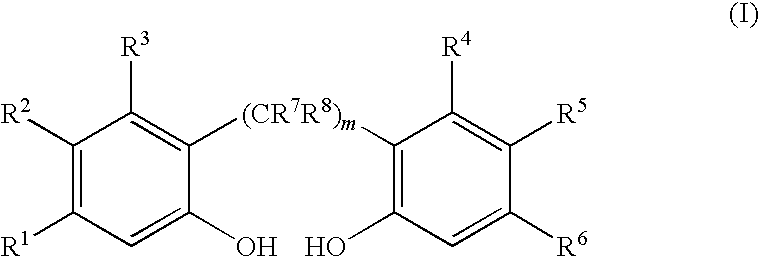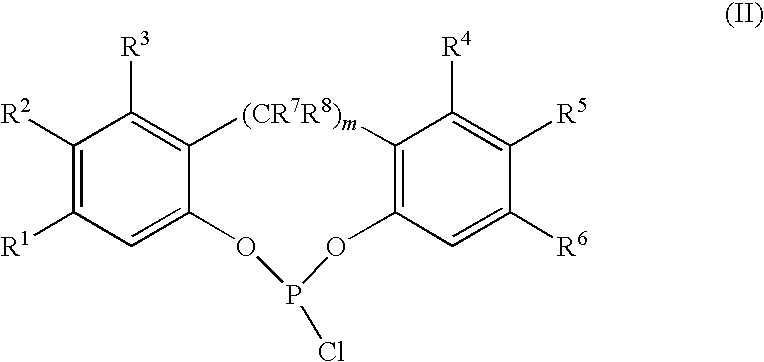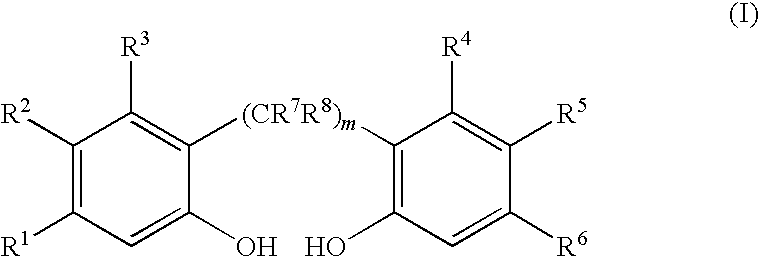Isothermal process for phosphoromonochloridite synthesis
a technology of phosphoromonochloridite and isothermal process, which is applied in the field of process for preparing phosphoromonochloridite, can solve problems such as cost increas
- Summary
- Abstract
- Description
- Claims
- Application Information
AI Technical Summary
Benefits of technology
Problems solved by technology
Method used
Image
Examples
example 1
Preparation of 1,1′-Biphenyl-2,2′-Diyl Phosphoromonochloridite in the Presence of Trace Amount of Pyridine
[0067]2.2′-Biphenol (283 kilogram (kg), 1521 moles) is dissolved in 508 kg tetrahydrofuran, 151 kg toluene and 3.2 kg pyridine (4.0 moles) by heating to about 50° C. and then cooling to ambient temperature (20-25° C.) to make a feed solution. The feed solution is then added over a period of 24 hours to a stirred and refluxed solution of PCl3 (318 kg, 2317 moles) in toluene (1636 kg) at an addition rate sufficient to maintain a reaction temperature of 98° C. The stirring is continued until greater than 98 percent of the 2,2′-biphenol is reacted as determined by taking aliquots for 31P NMR. The additional reaction time is about 2 hours. The 31P NMR spectrum shows that the yield of 1,1′-biphenyl-2,2′-diyl phosphoromonochloridite is 97 mole percent, based on moles of 2,2′-biphenol employed, with reminder being by-products. The excess PCl3 and tetrahydrofuran are removed by distillat...
PUM
| Property | Measurement | Unit |
|---|---|---|
| boiling point | aaaaa | aaaaa |
| boiling point | aaaaa | aaaaa |
| dielectric constant | aaaaa | aaaaa |
Abstract
Description
Claims
Application Information
 Login to View More
Login to View More - R&D
- Intellectual Property
- Life Sciences
- Materials
- Tech Scout
- Unparalleled Data Quality
- Higher Quality Content
- 60% Fewer Hallucinations
Browse by: Latest US Patents, China's latest patents, Technical Efficacy Thesaurus, Application Domain, Technology Topic, Popular Technical Reports.
© 2025 PatSnap. All rights reserved.Legal|Privacy policy|Modern Slavery Act Transparency Statement|Sitemap|About US| Contact US: help@patsnap.com



